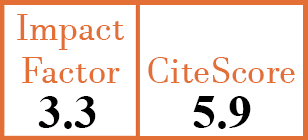Full Papers
Ultrasound assessment, unlike clinical assessment, reflects enthesitis in patients with psoriatic arthritis
Y. Yamada1, K. Inui2, T. Okano3, K. Mandai4, K. Mamoto5, T. Koike6, S. Takeda7, E. Yamashita8, Y. Yoshida9, C. Tateishi10, D. Tsuruta11, H. Nakamura12
- Department of Orthopaedic Surgery, Osaka City University Graduate School of Medicine, Osaka, Japan.
- Department of Orthopaedic Surgery, Osaka City University Graduate School of Medicine, Osaka, Japan. inuken@med.osaka-cu.ac.jp
- Department of Orthopaedic Surgery, Osaka City University Graduate School of Medicine, Osaka, Japan.
- Department of Orthopaedic Surgery, Osaka City University Graduate School of Medicine, Osaka, Japan.
- Department of Orthopaedic Surgery, Yodogawa Christian Hospital, Osaka, Japan.
- Centre for Senile Degenerative Disorders (CSDD), Osaka City University Graduate School of Medicine, Osaka, Japan.
- Central Clinical Laboratory, Osaka City University Hospital, Osaka, Japan.
- Central Clinical Laboratory, Osaka City University Hospital, Osaka, Japan.
- Central Clinical Laboratory, Osaka City University Hospital, Osaka, Japan.
- Department of Dermatology, Osaka City University Graduate School of Medicine, Osaka, Japan.
- Department of Dermatology, Osaka City University Graduate School of Medicine, Osaka, Japan.
- Department of Orthopaedic Surgery, Osaka City University Graduate School of Medicine, Osaka, Japan.
CER13003
2021 Vol.39, N°1
PI 0139, PF 0145
Full Papers
PMID: 32301418 [PubMed]
Received: 10/12/2019
Accepted : 23/03/2020
In Press: 17/04/2020
Published: 05/02/2021
Abstract
OBJECTIVES:
Enthesitis is a major musculoskeletal manifestation of psoriatic arthritis (PsA). It is conventionally assessed clinically, by the presence of tenderness, despite its low reliability. However, ultrasound (US) provides a sensitive and feasible method for evaluating enthesitis. We investigated enthesitis as assessed clinically and by US in patients with PsA.
METHODS:
Forty-seven patients with PsA underwent US examination of the bilateral humeral medial epicondyles and insertions of the triceps, distal quadriceps, proximal/distal patellae, Achilles tendons, and plantar fascia. These 14 entheses were also clinically evaluated by tenderness. The correspondence between US and clinical enthesitis was evaluated, as well as their associations with inflammatory markers (C-reactive protein [CRP], matrix metalloproteinase-3 [MMP-3]), disease activity indices (Disease Activity in Psoriatic Arthritis [DAPSA], Disease Activity Score 28 joints [DAS28-CRP], Psoriatic Arthritis Screening and Evaluation [PASE], Psoriasis Area Severity Index [PASI]), radiographic damage (modified Total Sharp Score [mTSS]), and functional status (health assessment questionnaire [HAQ]), and axial involvement.
RESULTS:
Among 47 patients with PsA, 37 and 23 had US and clinical enthesitis, respectively. US and clinical enthesitis had very low concordance (kappa coefficient 0.04), with no correlation between enthesitis counts (r=0.15, p=0.30). The US enthesitis count correlated only with the MMP-3 level (r=0.41, p=0.007), whereas the clinical enthesitis count correlated with the DAPSA, DAS28-CRP, HAQ, and PASE (r=0.50, p<0.001; r=0.44, p=0.002; r=0.41, p=0.008; r=0.54, p<0.001, respectively).
CONCLUSIONS:
US and clinical enthesitis are completely different entities. US enthesitis, but not clinical enthesitis, reflects inflammatory conditions.


